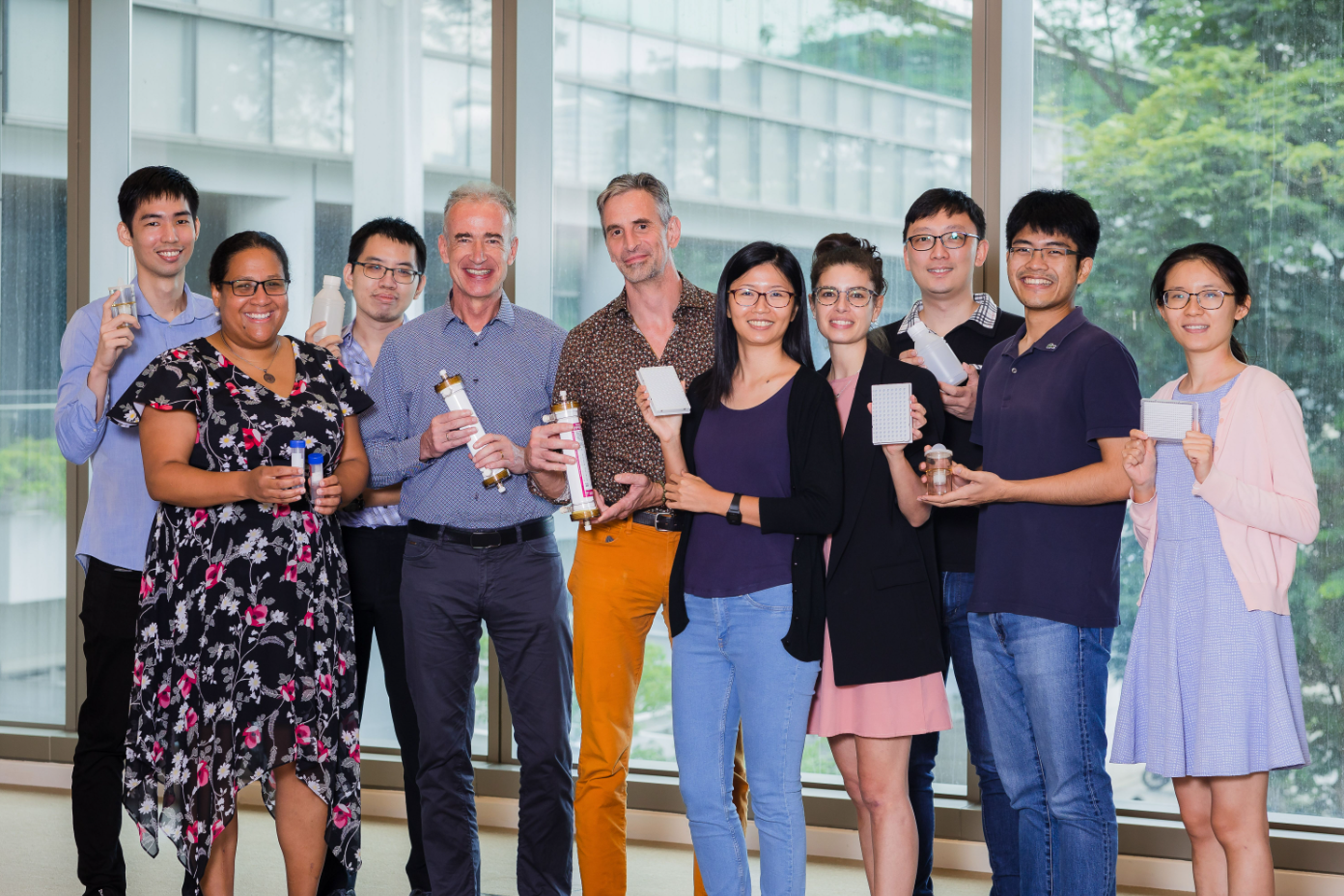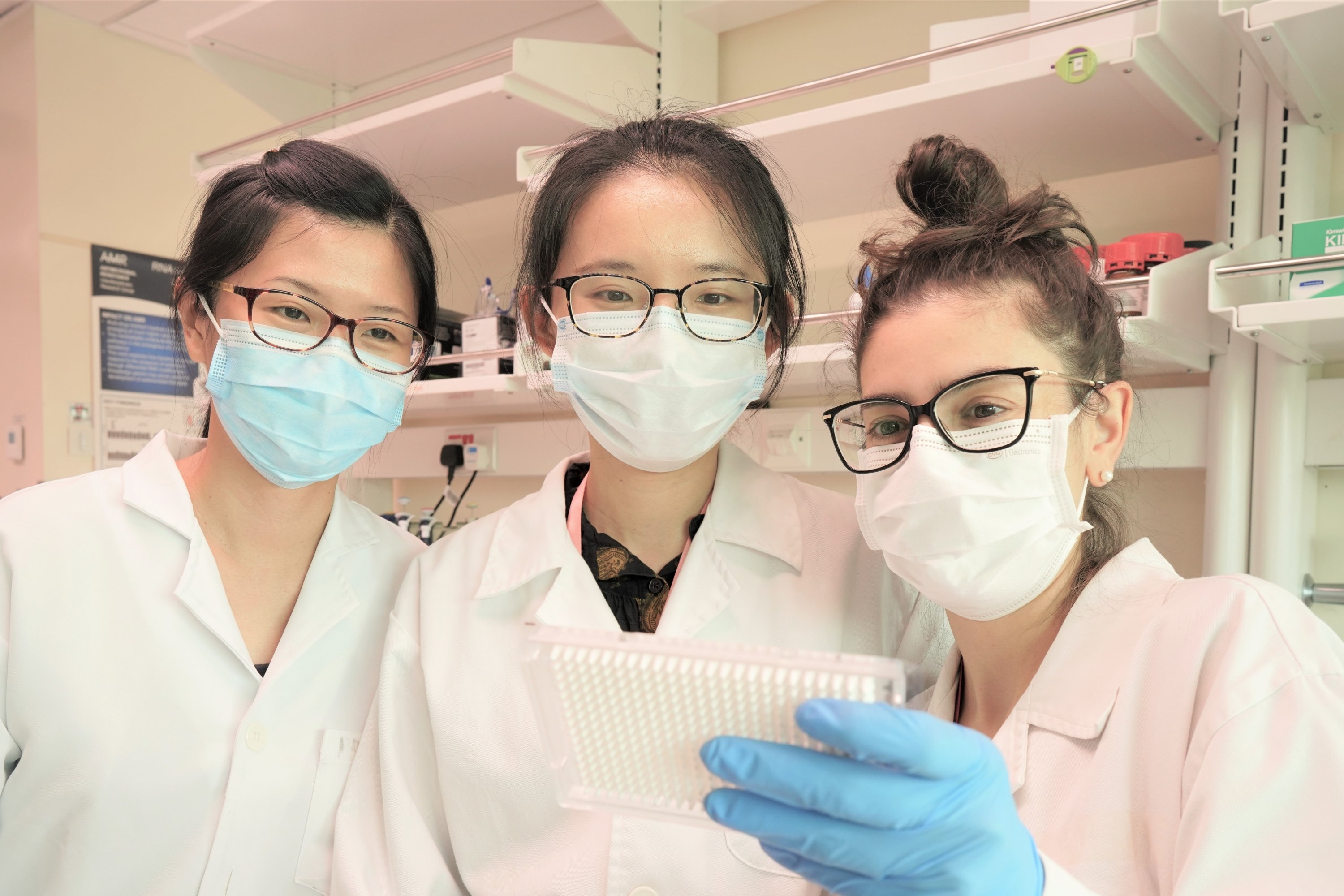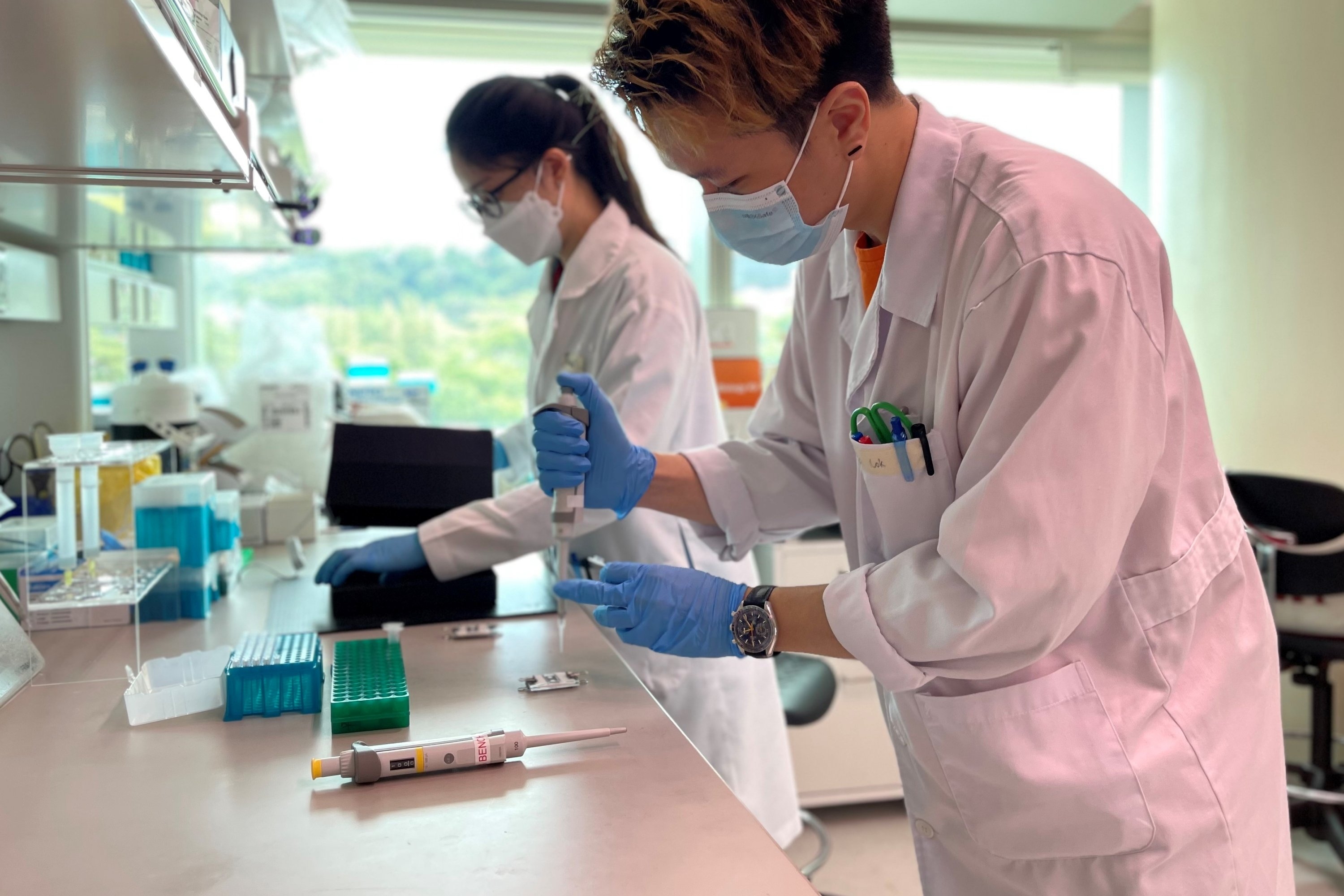
Assay determines the percentage of Omicron, other variants in Covid wastewater
Developed by the Singapore-MIT Alliance for Research and Technology, the assay can provide new details about the type of SARS-CoV-2 circulating in a community.
Wastewater monitoring emerged amid the Covid-19 pandemic as an effective and noninvasive way to track a viral outbreak, and advances in the technology have enabled researchers to not only identify but also quantify the presence of particular variants of concern (VOCs) in wastewater samples.
Last year, researchers with the Singapore-MIT Alliance for Research and Technology (SMART) made the news for developing a quantitative assay for the Alpha variant of SARS-CoV-2 in wastewater, while also working on a similar assay for the Delta variant. Previously, conventional wastewater detection methods could only detect the presence of SARS-CoV-2 viral material in a sample, without identifying the variant of the virus.
Now, a team at SMART has developed a quantitative RT-qPCR assay that can detect the Omicron variant of SARS-CoV-2. This type of assay enables wastewater surveillance to accurately trace variant dynamics in any given community or population, and support and inform the implementation of appropriate public health measures tailored according to the specific traits of a particular viral pathogen.
The capacity to count and assess particular VOCs is unique to SMART’s open-source assay, and allows researchers to accurately determine displacement trends in a community. Hence, the new assay can reveal what proportion of SARS-CoV-2 virus circulating in a community belongs to a particular variant. This is particularly significant, as different SARS-CoV-2 VOCs — Alpha, Delta, Omicron, and their offshoots — have emerged at various points throughout the pandemic, each causing a new wave of infections to which the population was more susceptible.
The team's new allele-specific RT-qPCR assay is described in a paper, “ Rapid displacement of SARS-CoV-2 variant Delta by Omicron revealed by allele-specific PCR in wastewater ,” published this month in Water Research . Senior author on the work is Eric Alm, professor of biological engineering at MIT and a principal investigator in the Antimicrobial Resistance (AMR) interdisciplinary research group within SMART, MIT’s research enterprise in Singapore. Co-authors include researchers from Nanyang Technological University (NTU), Singapore National University (NUS), MIT, Singapore Centre for Environmental Life Sciences Engineering (SCELSE), and Istituto Zooprofilattico Sperimentale della Lombardia e dell'Emilia Romagna (IZSLER) in Italy.
Omicron overtakes delta within three weeks in Italy study
In their study, SMART researchers found that the increase in booster vaccine population coverage in Italy concurred with the complete displacement of the Delta variant by the Omicron variant in wastewater samples obtained from the Torbole Casaglia wastewater treatment plant, with a catchment size of 62,722 people. Taking less than three weeks, the rapid pace of this displacement can be attributed to Omicron’s infection advantage over the previously dominant Delta in vaccinated individuals, which may stem from Omicron’s more efficient evasion of vaccination-induced immunity.
“In a world where Covid-19 is endemic, the monitoring of VOCs through wastewater surveillance will be an effective tool for the tracking of variants circulating in the community and will play an increasingly important role in guiding public health response,” says paper co-author Federica Armas, a senior postdoc at SMART AMR. “This work has demonstrated that wastewater surveillance can be used to quickly and quantitatively trace VOCs present in a community.”
Wastewater surveillance vital for future pandemic responses
As the global population becomes increasingly vaccinated and exposed to prior infections, nations have begun transitioning toward the classification of SARS-CoV-2 as an endemic disease, rolling back active clinical surveillance toward decentralized antigen rapid tests, and consequently reducing sequencing of patient samples. However, SARS-CoV-2 has been shown to produce novel VOCs that can swiftly emerge and spread rapidly across populations, displacing previously dominant variants of the virus. This was observed when Delta displaced Alpha across the globe after the former’s emergence in India in December 2020, and again when Omicron displaced Delta at an even faster rate following its discovery in South Africa in November 2021. The continuing emergence of novel VOCs therefore necessitates continued vigilance on the monitoring of circulating SARS-CoV-2 variants in communities.
In a separate review paper on wastewater surveillance titled “ Making Waves: Wastewater Surveillance of SARS-CoV-2 in an Endemic Future, ” published in the journal Water Research , SMART researchers and collaborators found that the utility of wastewater surveillance in the near future could include 1) monitoring the trend of viral loads in wastewater for quantified viral estimates circulating in a community; 2) sampling of wastewater at the source — e.g., taking samples from particular neighborhoods or buildings — for pinpointing infections in neighborhoods and at the building level; 3) integrating wastewater and clinical surveillance for cost-efficient population surveillance; and 4) genome sequencing wastewater samples to track circulating and emerging variants in the population.
“Our experience with SARS-CoV-2 has shown that clinical testing can often only paint a limited picture of the true extent of an outbreak or pandemic. With Covid-19 becoming prevalent and with the anticipated emergence of further variants of concern, qualitative and quantitative data from wastewater surveillance will be an integral component of a cost- and resource-efficient public health surveillance program, empowering authorities to make more informed policy decisions,” adds corresponding author Janelle Thompson, associate professor at SCELSE and NTU. “Our review provides a roadmap for the wider deployment of wastewater surveillance, with opportunities and challenges that, if addressed, will enable us to not only better manage Covid-19, but also future-proof societies for other viral pathogens and future pandemics.”
In addition, the review suggests that future wastewater research should comply with a set of standardized wastewater processing methods to reduce inconsistencies in wastewater data toward improving epidemiological inference. Methods developed in the context of SARS-CoV-2 and its analyses could be of invaluable benefit for future wastewater monitoring work on discovering emerging zoonotic pathogens — pathogens that can be transmitted from animals to humans — and for early detection of future pandemics.
Furthermore, far from being confined to SARS-CoV-2, wastewater surveillance has already been adapted for use in combating other viral pathogens. Another paper from September 2021 described an advance in the development of effective wastewater surveillance for dengue, Zika, and yellow fever viruses, with SMART researchers successfully measuring decay rates of these medically significant arboviruses in wastewater. This was followed by another review paper by SMART published in July 2022 that explored current progress and future challenges and opportunities in wastewater surveillance for arboviruses. These developments represent an important first step toward establishing arbovirus wastewater surveillance, which would help policymakers in Singapore and beyond make better informed and more targeted public health measures in controlling arbovirus outbreaks such as dengue, which is a significant public health concern in Singapore.
“Our learnings from using wastewater surveillance as a key tool over the course of Covid-19 will be crucial in helping researchers develop similar methods to monitor and tackle other viral pathogens and future pandemics,” says Lee Wei Lin, first author of the latest SMART paper and research scientist at SMART AMR. “Wastewater surveillance has already shown promising utility in helping to fight other viral pathogens, including some of the world’s most prevalent mosquito-borne diseases, and there is significant potential for the technology to be adapted for use against other infectious viral diseases.”
The research is carried out by SMART and its collaborators at SCELSE, NTU, and NUS, co-led by Professor Eric Alm (SMART and MIT) and Associate Professor Janelle Thompson (SCELSE and NTU), and is supported by Singapore’s National Research Foundation (NRF) under its Campus for Research Excellence And Technological Enterprise (CREATE) program. The research is part of an initiative funded by the NRF to develop sewage-based surveillance for rapid outbreak detection and intervention in Singapore.
SMART was established by MIT in partnership with the NRF in 2007. SMART is the first entity in CREATE developed by NRF and serves as an intellectual and innovation hub for research interactions between MIT and Singapore, undertaking cutting-edge research projects in areas of interest to both Singapore and MIT. SMART currently comprises an Innovation Centre and five interdisciplinary research groups: AMR, Critical Analytics for Manufacturing Personalized-Medicine, Disruptive & Sustainable Technologies for Agricultural Precision, Future Urban Mobility, and Low Energy Electronic Systems.
The AMR IRG is a translational research and entrepreneurship program that tackles the growing threat of antimicrobial resistance. By leveraging talent and convergent technologies across Singapore and MIT, they tackle AMR head-on by developing multiple innovative and disruptive approaches to identify, respond to, and treat drug-resistant microbial infections. Through strong scientific and clinical collaborations, our goal is to provide transformative, holistic solutions for Singapore and the world.
Reprinted with permission of MIT NewsShare this article:
Related Articles:
A new way to detect the SARS-CoV-2 Alpha variant in wastewater
July 28, 2021 • mitNew 10-minute test detects Covid-19 immunity
Nov. 22, 2021 • mitLinks/images:
- http://smart.mit.edu/
- https://smart.mit.edu/news-events/smart-breakthrough-in-detection-of-sars-cov-2-variant-in-wastewater
- https://www.sciencedirect.com/science/article/pii/S004313542200762X?via%3Dihub
- https://amr.smart.mit.edu/
- https://www.sciencedirect.com/science/article/pii/S0043135422004882
- https://pubs.acs.org/doi/10.1021/acs.estlett.1c00517
- https://www.sciencedirect.com/science/article/abs/pii/S004313542200851X
- https://www.straitstimes.com/singapore/environment/record-32-deaths-from-dengue-last-year
- https://www.nrf.gov.sg/
- https://www.nrf.gov.sg/
- https://www.create.edu.sg/
- http://amr.smart.mit.edu/#home


